STAFF
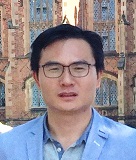
Dr. Gaochuang CAI
Email address: cai[at]kumamoto-u.ac.jp
*Please replace "[at]" with @.
- Research Fields
- Structural safety and sustainability (SSS), Seismic resilience,
High-performance simulation, AI for structural engineering, Digital pattern
Research interest
Cai’s Lab.@IROAST, KU, Japan
Introduction of Cai’s Lab.@IROAST
Dr. Gaochuang Cai, PI, Ph.D.
Associate professor, IROAST, Kumamoto University, Japan
Adjunct professor, Ecole Centrale de Lyon – ENISE, Université de Lyon, France
| Since 2006, Dr. Cai has participated in many projects at national and international levels as either Principal Investigator (PI) or co-PI or collaborator. As shown in the figure, his research activities ranged from structural design, evaluation, and optimization, building materials, and construction sustainability, all of which are expected to contribute to the sustainable development GOALS adopted by the United Nations. The main outcomes of Cai’s Lab mainly consist of new structural systems, high-performance concrete technology and theory, and structural dynamic evaluation and damage control technology. |
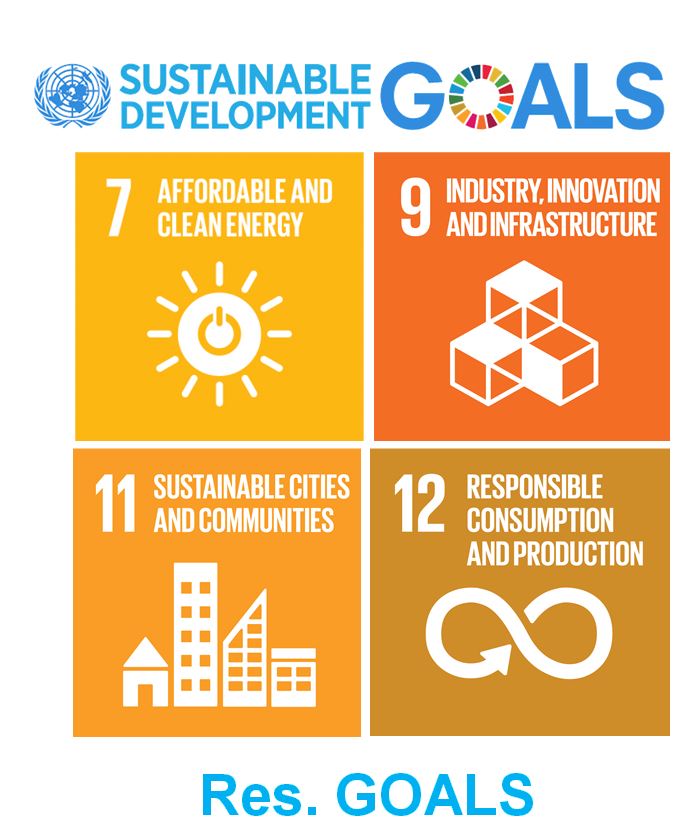 |

The main topics of Cai’s group at IROAST are,
(1) Performance and evaluation of structures subjected to strong earthquakes
The disaster loss caused by strong earthquakes is hard to estimate, not only at the level of life and property but also at the psychological level. This is of great significance to Japan, a major earthquake country. This research group mainly focuses on the structural safety and optimization of reinforced concrete structures and concrete composite structures under cyclic reversed loads caused by Near-Fault Ground Motion (NFGM) and Long-period ground motion (LPGM). The current work is to establish a constitutive model of the structural elements through experiments to develop more effective elastoplastic models, structural dynamic analysis models. For structural engineering, the two most important characteristics of NFGM, are the impulsive character of the velocity and long-period displacement ground motions. LGPM will also a large amplitude horizontal displacement of the structure exist for a long time thereby increasing the probability of collapse of the structure, especially high-rise structures.

Various faults and main characteristics of NFGM loads
(2) Next generation structural design and assessment
At present, the research group is carrying out a series of studies, to establish a complete Design for safety and sustainability (DSS) theory to make contributions to the safety and sustainability of future structures. The object structures mainly include Resilient structures, sustainable structures, modular structures, demountable structures, and sustainable materials. Most of the structures use reinforced concrete materials. The objectives of the research are to ensure the safety of structures at external loads or environmental impacts, at the same time, to consider structural sustainability such as demountable or reusability.
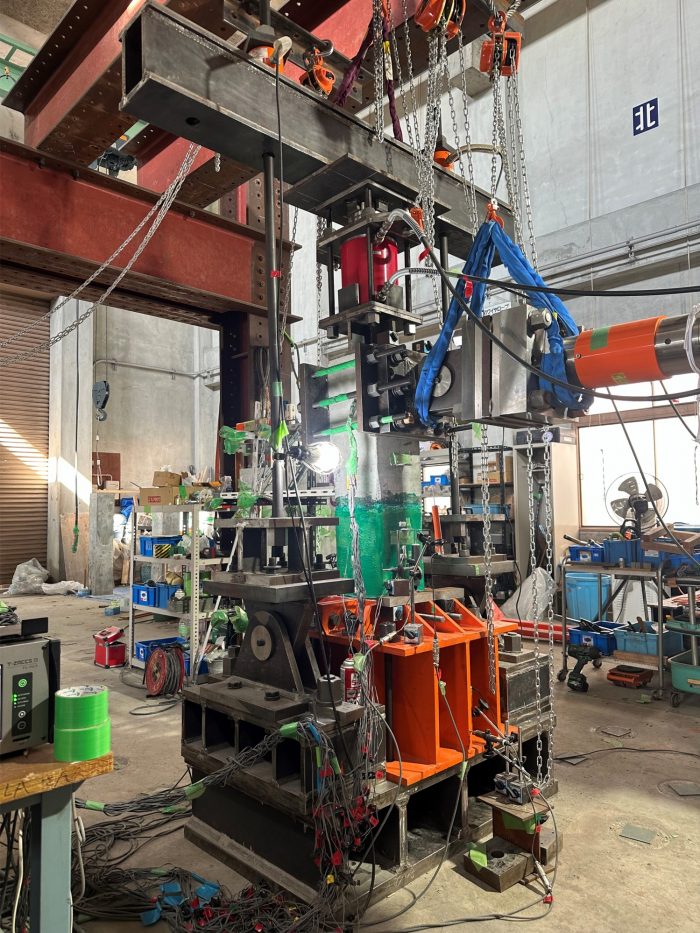 |
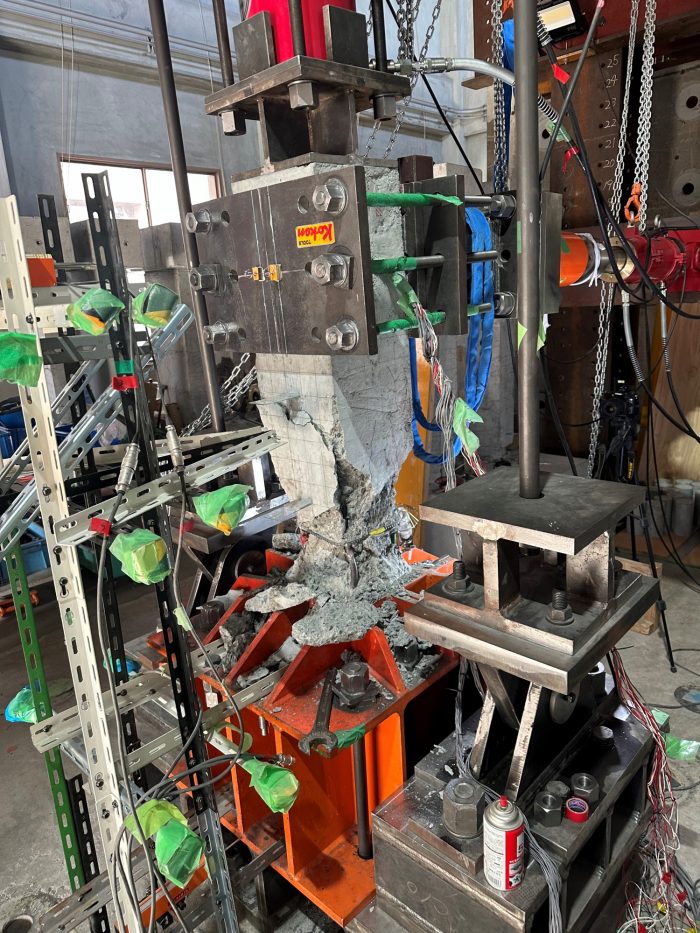 |
 |
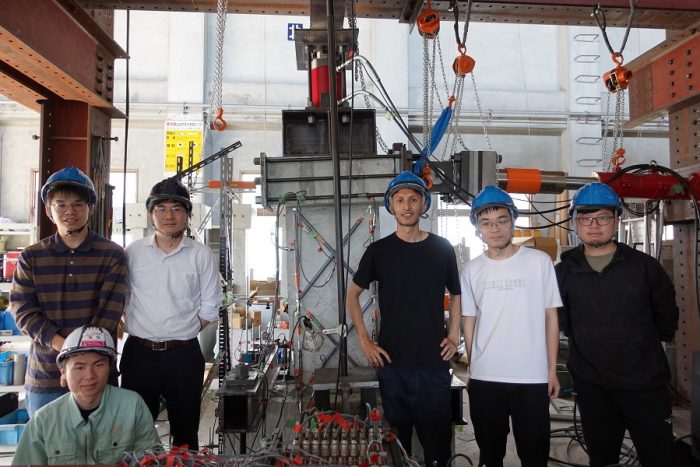
Seismic behaviour of special structures subjected to large deformation
(3) Application of advanced materials in structural and material engineering
High-performance and high-durability composite materials and functional materials increasingly are being used to produce high-performance structures, functional structural materials, and structural repairs after disasters or environmental corrosion. The research group is studying the application of ultra-high-strength steel bars in reinforced concrete structures, studying the application of fibre composite materials, phase change materials and carbon nanofibers in high-strength concrete, and studying the application of large-fracture FRP materials and high-strain hardening materials in structural repair such as textile reinforced mortar thin layer.

Concrete beams strengthened with textile reinforced mortar thin layer
(4) Theory and advanced technology of eco concrete and high-performance concrete
This research focuses on the optimization of supplementary cementitious materials (SCM)-cement materials system, including volcanic ash, fly ash, ground granulated blast furnace slag (BS) in Portland cement composite systems, by researching several key indexes, by chemical, physical and mechanical tests. At the same time, the research group is also developing zero-cement high-performance concrete materials and looks forward to contributing design for materials sustainability in construction.
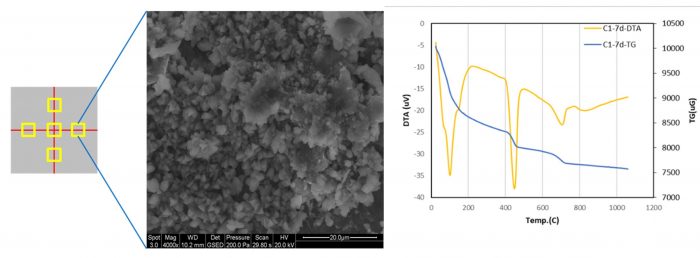
Research Activities
JST Sakura Science Exchange Program.
Advanced technology and risk analysis of structures under extreme loads or environments (極端な負荷または環境下にある構造物の高度なテクノロジーとリスク分析)
2024.1.22-2024.1.28 (→NEWS)
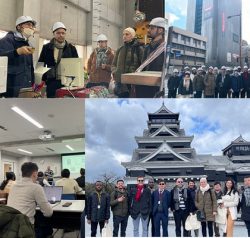
Visit of ENISE (France) in Nov. 2023
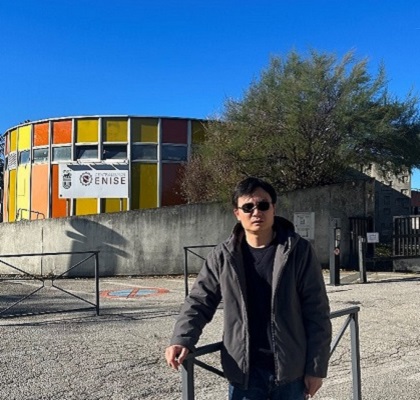
Members
| Postdoctral Researcher | Prafulla Bahadur MALLA |
|---|
Achievement
Publications
- 2025
- 2024
-
- Seismic Behavior of Resilient Reinforced Concrete Columns with Ultra-High-Strength Rebars Under Strong Earthquake-Induced Multiple Reversed Cyclic Loading
- Experimental and Transformer-Based Study on Seismic Behavior and Plastic Hinge Length of RC Columns Reinforced with End-Fixed Ultra-High Strength Rebars
- Shear behavior of reinforced concrete beams with high-strength reinforcements after high temperatures
- The influence of high temperature exposure on the tensile and cracking behavior of crimped-textile reinforced mortar composites (TRMs)
- Application of supervised learning for classification of cracking and non-cracking major damage in TRMs based on AE features
- Effect of axial load and shear span on seismic performance of CFT columns reinforced with end-fixed ultra-high strength rebars
- Tensile and cracking behaviour of crimped textile reinforced mortar (TRM) based on digital image correlation
- Flexural stiffness of RC beams with high-strength steel bars after exposure to elevated temperatures
- 2023
-
- Seismic Behavior of Circular Concrete Columns Reinforced by Low Bond Ultrahigh Strength Rebars
- Seismic behavior and simplified hysteretic model of precast concrete wall panels with bolted connections under cyclic loading
- Bond performance of carbon fiber reinforced polymer rebars in ultra-high-performance concrete
- Cyclic behavior of RCFT columns with large D/t ratio steel tubes: Effect of reinforcement arrangement
- Seismic behavior of square concrete columns confined by FRP-steel composite tube
- Damage control of the masonry infills in RC frames under cyclic loads: a full-scale test study and numerical analyses
- Performance and numerical modelling of full-scale demountable bolted PC wall panels subjected to cyclic loading
- 2022
Grants
Ohata Foundation FY2022, "Seismic Performance and AI-based Evaluation Method of SRC Rectangular Columns Subjected to Multiple Repeated Cyclic Loads" October 2022-September 2023
The Obayashi Foundation FY2022, 高温下でのTRC補強層-コンクリート界面の剥離挙動の数値解析法の開発, April 2022-March 2023
- STAFF
-
- Wei XU
- Shinichiro Sawa
- Tetsuya KIDA
- Armando T. QUITAIN
- Junhua WANG
- Yoshihiro SEKINE
- Akira UEDA
- Yusuke INOMATA
- Muhammad Sohail AHMAD
- Jonas Karl N. AGUTAYA
- Nobleson KUNJAPPY
- Prafulla Bahadur MALLA
- Mohammad Atiqur RAHMAN
- Reetu Rani
- Kei TODA
- Tomoyasu MANI
- Agus Pulung SASMITO
- Tung Thanh TRAN
- Dario ZAPPA
- Daniel P. ZITTERBART
- Mitsuhiro AIDA
- U Rajendra ACHARYA
- Dmitri Aleks MOLODOV
- László PUSZTAI
- Yufeng ZHENG
- Gaochuang CAI
- Masahiko FURUTANI
- Hiroki MATSUO
- Zhongyue ZHANG
- Adam Karl SCHWARTZKOPFF
- Takashi ISHIDA
- Takumi HIGAKI
- Takahiro HOSONO
- Kei ISHIDA
- Makiko KOBAYASHI
- Ruda LEE
- Yuta NAKASHIMA
- Shin-Ichi OHIRA
- Atsushi SAINOKI
- Mitsuru SASAKI
- Keitaro TAKAHASHI
- Suttichai ASSABUMRUNGRAT
- Josep-Lluís BARONA-VILAR
- Nicorae BARSAN
- Jorge Norberto BELTRAMINI
- Olivier BOUTIN
- Paul BOWEN
- Pierre BREUL
- Maria Jose COCERO
- Patrice DELMAS
- Martin DIENWIEBEL
- Martino DI SERIO
- Derek ELSWORTH
- Carolina ESCOBAR
- Bruno FAVERY
- Etsuko FUJITA
- Tomonari FURUKAWA
- Jens HARTMANN
- Mohammad Abul HASNAT
- Yang JU
- Hoon KIM
- Ick Chan KWON
- Wen-Shing LEE
- Youn-Woo LEE
- Pavel LEJČEK
- Dongfang LIANG
- Bo LIU
- Tao LIU
- Hui LU
- Reiko ODA
- Yong Il PARK
- Shie-Ming PENG
- Christian RENTENBERGER
- Parasuraman SELVAM
- Amir SI LARBI
- Konstantinos Daniel TSAVDARIDIS
- Gioacchino (Cino) VIGGIANI
- Thomas WAITZ
- Yan XIAO
- Zhenghe XU
- Kazuki TAKASHIMA

